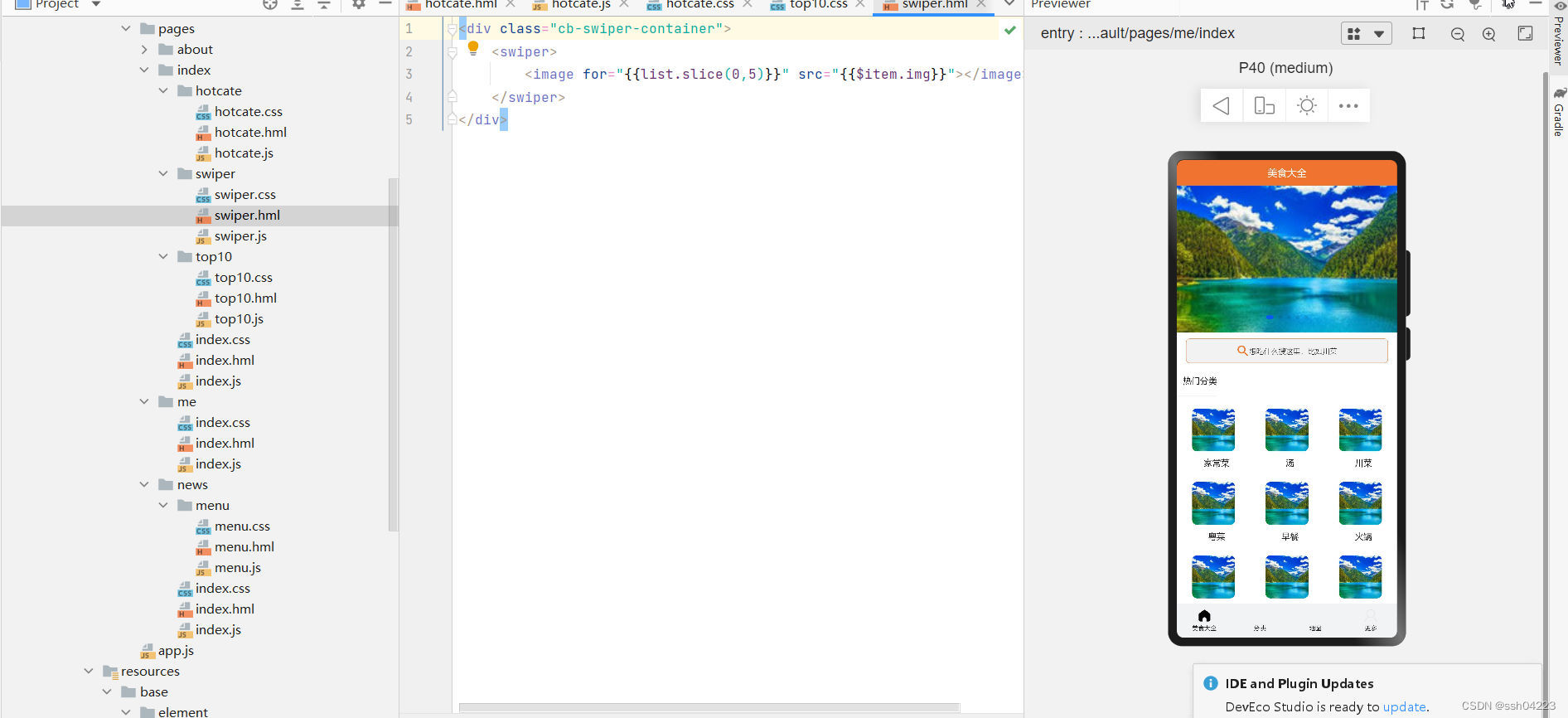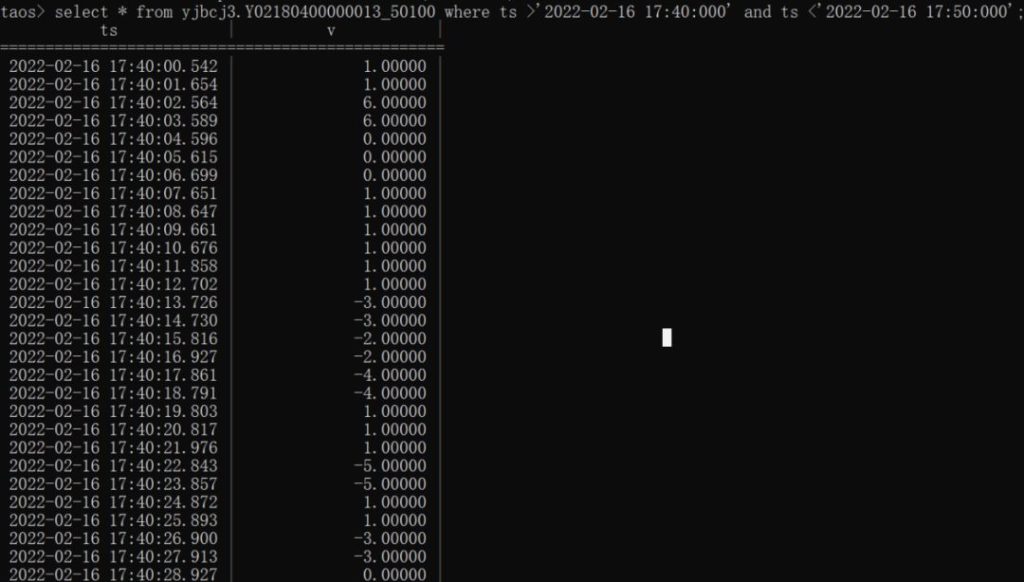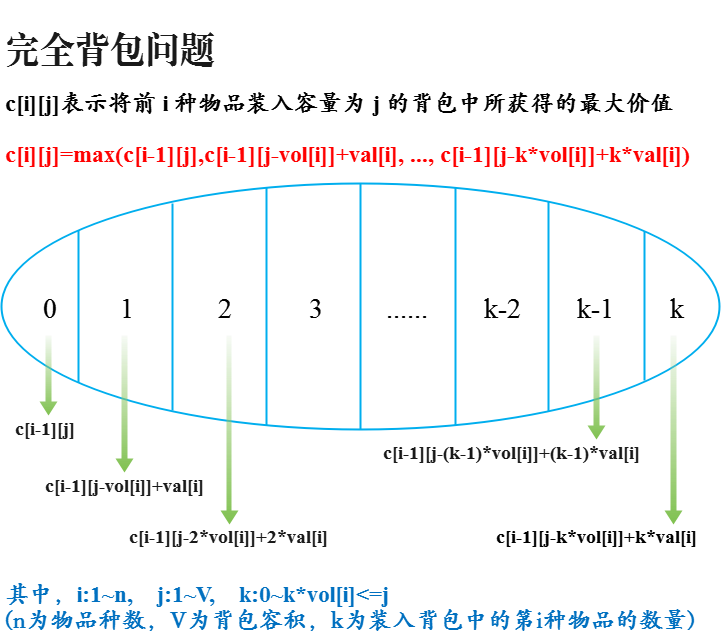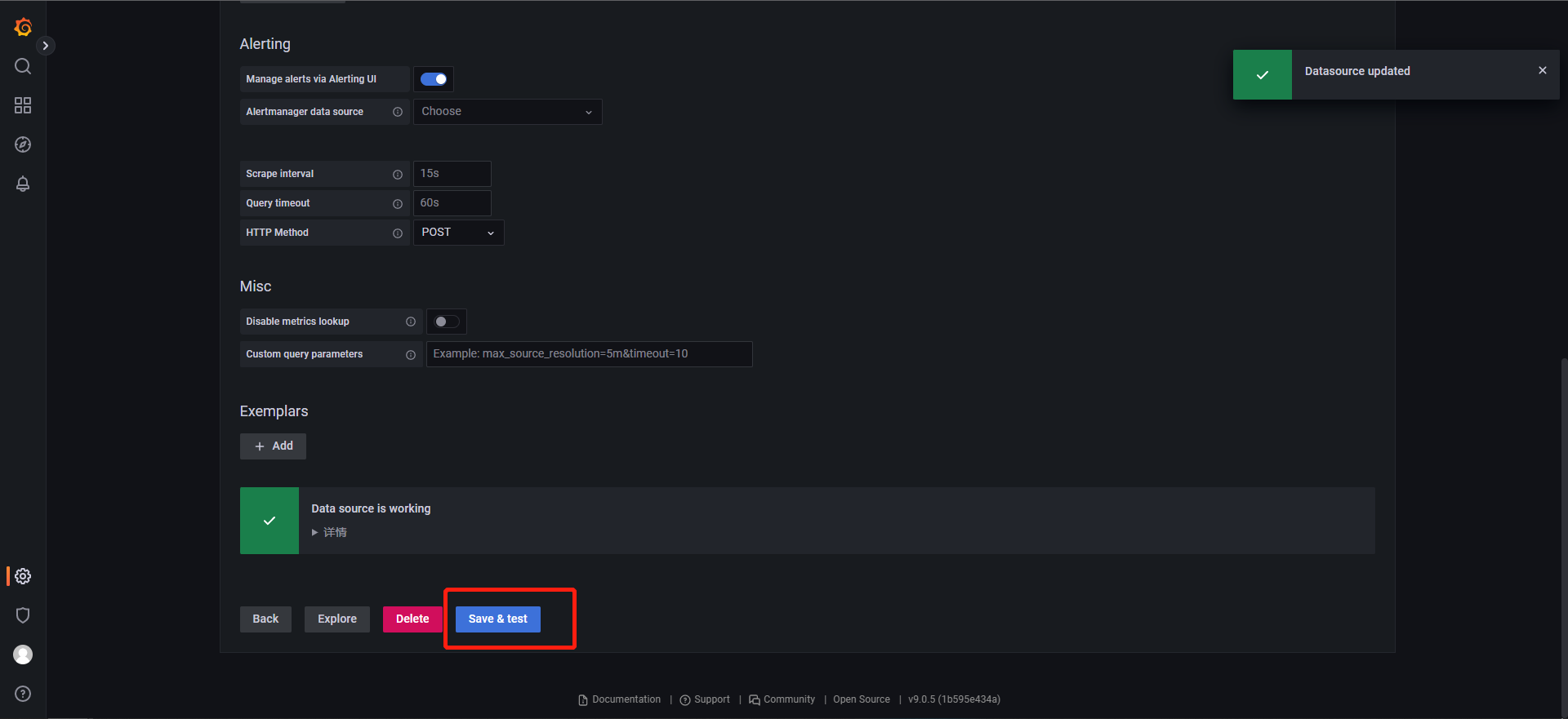当前位置:网站首页>MySQL database combat (1)
MySQL database combat (1)
2022-08-03 10:50:00 【wrdoct】
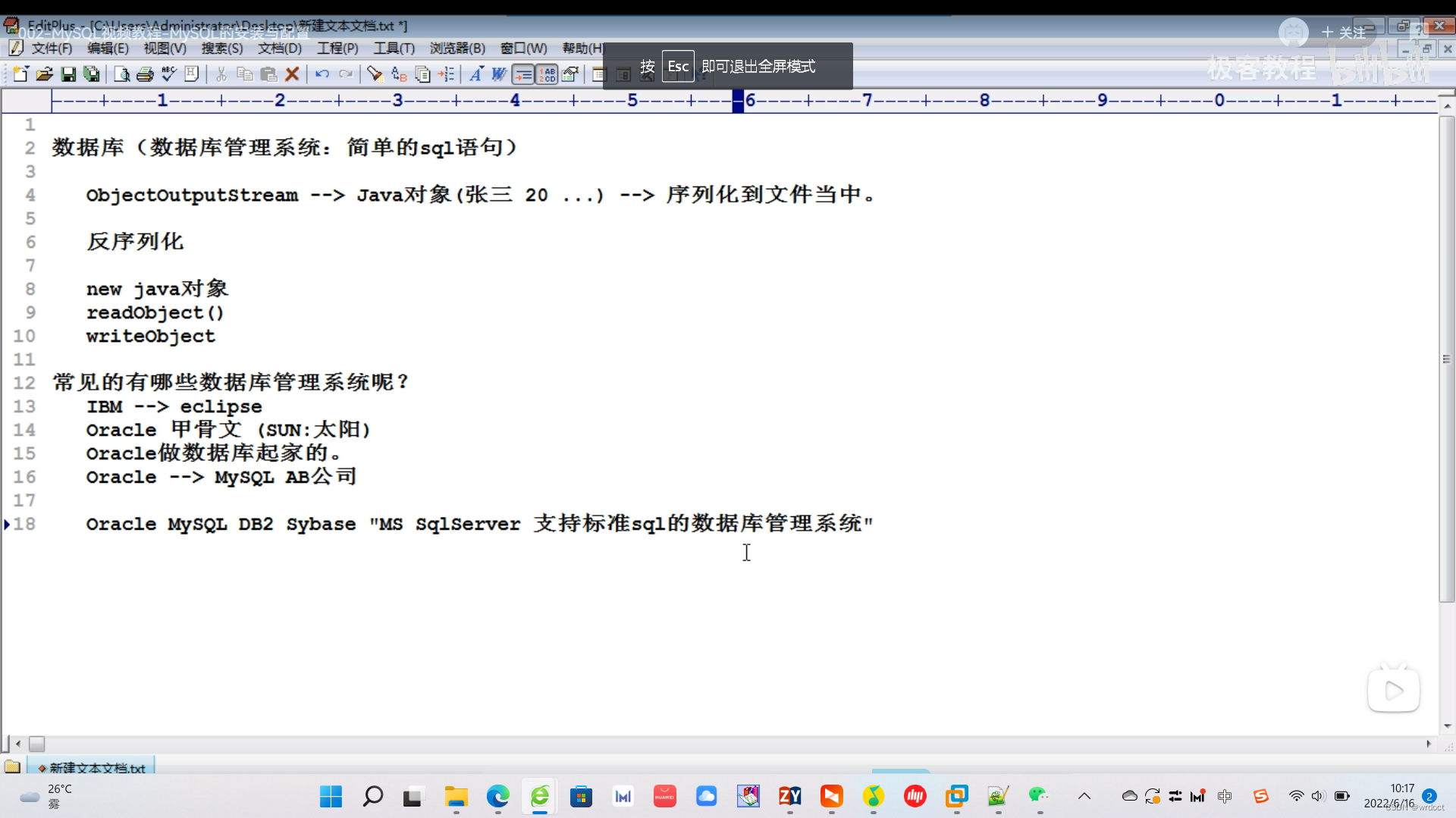
一、数据库概述
(1)sql、DB、DBMS分别是什么,他们的关系?
DB:DataBase(数据库,数据库实际上在硬盘上以文件的形式存在).
DBMS:DataBase Management System(数据库管理系统,常见的有:MySQL, Oracle, DB2, Sybase, SqlServer…).
SQL:结构化查询语言,是一门标准通用的语言.标准的sql适合于所有的数据库产品.SQL属于高级语言.SQL语句在执行的时候,实际上内部也会先进行编译,然后再执行sql.(sql语句的编译由DBMS完成).
DBMS负责执行sql语句,通过执行sql语句来操作DB当中的数据.
DBMS - (执行)->SQL -(操作)->DB
(2)什么是表?
表:table
是数据库的基本组成单元,所有的数据都以表格的形式组织,目的是可读性强.
【注】一个表包括行和列:
行:被称为数据/记录(data)
列:被称为字段(column)
(3)每一个字段应该包括哪些属性?
字段名、数据类型、相关的约束.
【注】数据类型:int、varchar、bigint…
(4)学习MySQL主要还是学习通用的SQL语句,包括增删改查,那么SQL怎么分类?
DQL(数据查询语言):查询语句,凡是select语句都是DQL.
DML(数据操作语言):insert、delete、update,对表当中的数据进行增删改.
DDL(数据定义语言):create、drop、alter,对表结构的增删改.
TCL(事务控制语言):commit提交事务,rollback回滚事务.
DCL(数据控制语言):grant授权、revoke撤销权限等.
(5)导入数据:
第一步:登录mysql数据库管理系统
命令:mysql -uroot -p
第二步:查看有哪些数据库
命令:show databases;
【注】这个不是SQL语句,属于MySQL的命令.
第三步:创建属于我们自己的数据库
命令:create database start;
【注】这个不是SQL语句,属于MySQL的命令.
第四步:使用start数据
命令:use start;
【注】这个不是SQL语句,属于MySQL的命令.
第五步:查看当前使用的数据库中有哪些表?
命令:show tables;
【注】这个不是SQL语句,属于MySQL的命令.
第六步:初始化数据
命令:source sql脚本;
【注】sql脚本:一个文件,以sql结尾,The file to write a lot ofsql语句.使用source命令执行sql脚本.
(6)删除数据库 :drop database start;
(7)查看表结构:desc 表名;
(8)常用命令:
select database(); #查看当前使用的是哪个数据库
select version(); #查看mysql的版本号
\c #结束一条语句
exit #退出mysql
show create table 表名; #查看创建表的语句
二、简单查询、条件查询、模糊查询
(1)简单的查询语句(DQL):
语法格式:
select 字段名1,字段名2,......from 表名;
select 字段名1,字段名2,... as ... from 表名;
【注】任何一条sql语句以“;”结尾.
sql语句不区分大小写.
标准sqlStatement requires a string(汉字)(varchar)使用单引号.
查询所有字段:select * from 表名;
(2)条件查询
条件查询需要用到where语句,where必须放到from语句表的后面.
语法格式:
select 字段名1,字段名2,......from 表名 where 条件;
【注】条件:between ... and ...; 必须左小右大,可以使用在数字方面,也可以使用在字符串方面,为左闭右开.
【注】在数据库中,NULL不是一个值,代表什么也没有,为空(空不是一个值,不能用等号衡量,必须使用 is null 或者 is not null).
【注】当运算符的优先级不确定的时候加小括号.
【注】in 等同于 or .(inThe end of the specific value is the,不是区间)
(3)模糊查询like
在模糊查询中,必须掌握两个特殊的符号:一个是%,一个是_.% 代表任意多个字符,_代表任意1个字符.
【注】在%和_With escape characters\,表示一个普通的%和_.
三、排序数据(升序、降序)
(1)默认是升序.若要指定:asc表示升序,desc表示降序.
select ... from ... order by ... asc, ... desc;
【注】越靠前的字段越能起到主导作用.只有当前面的字段无法完成排序的时候,Will start at the back of the field to sort.
select ... from ... order by 1; #表示按照第1The order of columns of sorts
select ... from ... order by 4; #表示按照第4The order of columns of sorts
四、分组函数/聚合函数/多行处理函数
(1)分组函数一共5个.又叫:多行处理函数(输入多行输出一行).
count 计数
sum 求和
avg 平均值
max 最大值
min 最小值
【注】所有分组函数都是对“某一组”数据进行操作的.
【注】分组函数自动忽略NULL.
(2)单行处理函数:输入一行输出一行.
【注】数据库中只要有NULL参与运算,最终结果一定是NULL.
ifnull(可能为NULL的数据, 被当做什么来处理); #属于单行处理函数
(3)Matters needing attention when using the grouping function:
分组函数不可以直接使用在where子句当中.
因为group by是在where执行之后才会执行,而Group functions must be exercised only after the group.
即:If the group functions directly use inwhere子句当中,Representative haven't group performed grouping function.
(4)count(*)和count(具体的某个字段)有什么区别?count(*):不是统计某个字段中数据的个数,而是统计总记录条数(With the field it doesn't matter);count(具体的某个字段):Said the statistics in this field不为NULL的数据总数量.
(5)分组函数也能组合起来使用.
五、分组查询
(1)group by 和 havinggroup by :According to a field or certain fields进行分组;having:After the grouping data再次过滤.
select ... from 表名 group by ... having 条件; #效率较低
select ... from 表名 where 条件 group by ...; #效率较高(能使用where尽量使用where)
【注】分组函数一般都会和group by联合使用,这也是为什么它被称为分组函数的原因.
并且任何一个分组函数都是在group by语句执行结束之后才会执行的.
当一条sql语句没有group by的话,整张表的数据会自成一组.
(2)规则:当一条sql语句中出现group by时,select后面只能跟分组函数和参与分组的字段.
(3)多个字段联合分组:
select ... from ... group by 字段1, 字段2;
(4)一个完整的DQL语句:
Function of the written order and execution order:
select 5
...
from 1
...
where 2
...
group by 3
...
having 4
...
order by 6
...
六、关于查询结果集的去重
select distinct 字段 from 表名; # distinct 关键字
【注】distinct 只能出现在所有字段的最前面,Said to unite behind all of the fields are to heavy.
七、连接查询
(1)在实际开发中,大部分情况下都不是从单表中查询数据,Are generally more table联合查询取出最终的结果.
(2)连接查询的分类:
According to the division s:SQL92、SQL99.
根据表的连接方式来划分:
内连接:等值连接、非等值连接
外连接:左外/左连接、右外/右连接
全连接:
(3)笛卡尔积现象:当两张表进行连接查询时,没有过滤/条件限制,Eventually join query result would beThe product of the two tables to record the number.
【注】避免笛卡尔积现象:加条件进行过滤.
但是不会减少记录的匹配次数,只不过显示的是有效记录(Won't improve the execution efficiency).
【注】表的别名:执行效率高,可读性好.
(4)内连接之等值连接:
最大的特点:条件是等量关系.
#SQL92 (太老,不用了)
select e.ename, d.dname from emp e, dept d where e.deptno = d.deptno;
#SQL99 (常用的) (Table join condition andwhereSeparation of data filter conditions,结构清晰)
#语法: ...A join B on 连接条件 where ...
select e.ename, d.dname from emp e join dept d on e.deptno = d.deptno;
select e.ename, d.dname from emp e inner join dept d on e.deptno = d.deptno; #inner可以省略,With the words of readability is better
(5)内连接之非等值连接:
最大的特点:条件是非等量关系.
(6)自连接:
最大的特点:一张表看做两张表,自己连接自己.
(7)外连接:
什么是外连接?和内连接的区别?
内连接:
假设A表和B表进行连接,使用内连接的话,凡是A表和B表能够匹配上的记录查询出来,这就是内连接.
A、B两张表没有主副之分,两张表是平等的.
外连接:
假设A表和B表进行连接,使用外连接的话,A、B两张表中有一张表是主表,一张表是副表,
The main query of the main table data,捎带着查询副表,
When the side tables of the data in the table data is not and matching,副表自动模拟出NULL与之匹配.
外连接的分类?
左外/左连接:On the left side of this form is the main table;
右外/右连接:The right of this table is the main table.
左连接有右连接的写法,右连接也会有对应的左连接的写法.
#outer可以省略
select 表名 from ... left join ... on ...; #左连接 fromAt the back of the is on the left side of the 主表
select 表名 from ... left outer join ... on ...; #左连接 fromAt the back of the is on the left side of the 主表
select 表名 from ... right join ... on ...; #右连接 joinAt the back of the is the right of the 主表
select 表名 from ... right outer join ... on ...; #右连接 joinAt the back of the is the right of the 主表
【注】To distinguish the internal connection and external connection is the main difference betweenleft和right.
【注】外连接最重要的特点是:主表的数据无条件的全部查询出来.
(8)全连接
(9)三张表的连接查询
...
A
join
B
join
C
on
...
【注】navicat工具箱:可以更方便的操作MySQL.
边栏推荐
- 像用户体验设计师一样思考
- 深入解析分布式文件系统的一致性的实现
- 出色的移动端用户验证
- MATLAB programming and application 2.7 Structural data and unit data
- 【无标题】函数,对象,方法的区别
- 以网强算,中国移动算网建设激发澎湃能量
- Depth study of 100 cases - convolution neural network (CNN) to realize the clothing image classification
- 3分钟实现内网穿透(基于ngrok实现)
- Leecode-SQL 1484. 按日期分组销售产品
- QT with OpenGL(HDR)
猜你喜欢
随机推荐
Skills required to be a good architect: How to draw a system architecture that everyone will love?What's the secret?Come and open this article to see it!...
在安装GBase 8c数据库的时候,报错显示“Host ips belong to different cluster”。这是为什么呢?有什么解决办法?
MySQL数据库基本使用
二叉搜索树(搜索二叉树)模拟实现(有递归版本)
后台图库上传功能
Guys, I have a problem: My source mysql has a table that has been writing to, I use mysql cdc connec
谷歌实用插件分享
Pixel mobile phone system
servlet生命周期详解--【结合源码】
synchronized
鸿蒙第三次
type="module" you know, but type="importmap" you know
三大产品力赋能欧萌达OMODA5
VL53L0X V2激光测距传感器 采集距离数据串口输出
自定义实现乘风破浪的小船
APENFT FOUNDATION官宣2022艺术梦想基金主题征集
【Star项目】小帽飞机大战(九)
Boolean 与numeric 无法互转
509. 斐波那契数
深度学习经典网络 -- Inception系列(稀疏结构)
